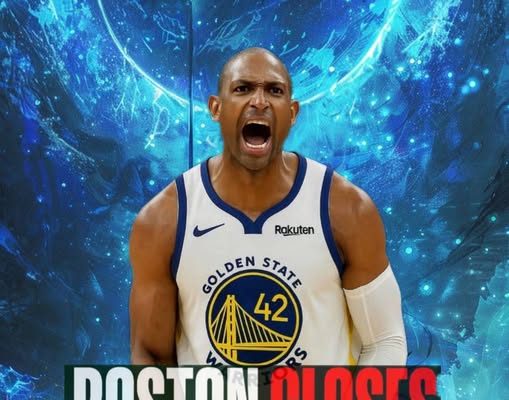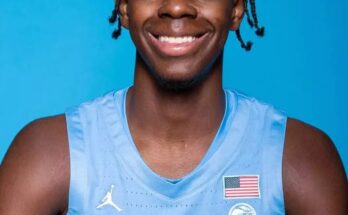The Boston Celtics’ frontcourt is in for a big makeover ! Brad Stevens had plans to retain Luke Kornet and Al Horford, but both veterans are moving on. Kornet is headed…
The Boston Celtics’ frontcourt is in for a big makeover, and it’s not the kind of gradual change that allows a team to quietly adjust. This is a full-on reshaping of a crucial part of the roster, and it’s happening much faster than Brad Stevens might have anticipated. When the Celtics’ President of Basketball Operations drew up his offseason blueprint, the plan was relatively straightforward: keep the core frontcourt rotation intact by re-signing or retaining Luke Kornet and Al Horford, two veterans who had proven themselves reliable and adaptable in different ways. Stevens valued the stability they brought, both in the locker room and on the court. But the NBA doesn’t always let plans play out exactly as envisioned. Instead, both Kornet and Horford are on their way out, and Boston now faces the challenge — and opportunity — of reimagining its interior presence for the future. Kornet is headed elsewhere, and Horford’s departure closes an era in Celtics basketball that bridged multiple generations of the team’s success.
Luke Kornet’s story with the Celtics was one of persistence and adaptability. He wasn’t the kind of player who made headlines every night, but he carved out a valuable niche for himself with his size, intelligence, and willingness to accept whatever role the team needed him to play. At 7-foot-2, Kornet offered rim protection, a long reach in the passing lanes, and the occasional ability to stretch the floor with his outside shot. He wasn’t flashy, but he was steady — a luxury in a league where dependable big men are harder to find than highlight-reel athletes. Stevens appreciated Kornet’s readiness; he could go long stretches without playing major minutes, then step in during a game with energy and discipline. But the NBA is a business, and Kornet’s combination of size, experience, and reasonable salary made him an appealing target for other teams in need of depth up front. The opportunity that came his way this offseason was one he couldn’t turn down, and while Boston might have wanted him back, they weren’t in position to match the terms he received elsewhere. His departure is the kind that doesn’t dominate the headlines, but the absence will be felt in the small moments — the possessions saved by a deflection, the midseason stretches where he filled in for an injured starter without a noticeable drop in team performance.
Al Horford’s exit is a different kind of loss. When Boston traded for him the first time and then brought him back after his stint away, they weren’t just acquiring a skilled big man; they were securing a leader. Horford has long been known for his professionalism, basketball IQ, and ability to anchor a defense while also contributing to the offense as a passer and shooter. He was a stabilizing presence during the Celtics’ various transitional phases, bridging the gap between the Isaiah Thomas era, the Kyrie Irving years, and the rise of Jayson Tatum and Jaylen Brown as franchise cornerstones. Horford’s ability to space the floor with his three-point shot, defend multiple positions, and guide younger players was invaluable. He wasn’t the kind of player who demanded the spotlight, but his influence on Boston’s culture and execution was enormous. His departure doesn’t just create a hole in the rotation — it leaves a leadership gap that will be hard to fill. At 38, Horford still had something left to offer, and while Stevens reportedly wanted him back, circumstances aligned for him to move on. Perhaps it’s the lure of one last contract in a different city, a chance to be closer to family, or simply the reality that the Celtics are evolving their roster in a new direction. Whatever the reason, Horford’s departure marks the end of a chapter that Celtics fans will remember fondly.
With Kornet and Horford both gone, Boston is forced into a situation where they must rebuild their frontcourt depth almost from scratch. Kristaps Porziņģis remains the centerpiece in the paint, but his injury history means the Celtics can’t afford to rely on him alone. They’ll need reinforcements — big men who can defend the rim, rebound, and fit into Boston’s switch-heavy defensive schemes without compromising floor spacing. The challenge for Stevens is finding players who can deliver those things without disrupting the chemistry that has been carefully built over the past few seasons. The Celtics’ offense thrives on ball movement, spacing, and unselfish play, so whoever joins the frontcourt rotation must be able to read the game at a high level and make quick decisions.
One of the biggest considerations for Boston will be how they replace Horford’s versatility. He wasn’t just a big who stood under the basket; he facilitated offense from the high post, initiated handoffs, and could defend everything from bruising centers to shifty guards in switches. That kind of versatility isn’t easy to replace with a single player. Stevens might have to find two or three different role players who, together, can replicate Horford’s impact. Kornet’s rim protection and length will also need to be replaced, which means the Celtics may explore both the trade market and free agency for a combination of veterans and developmental prospects. There’s also the possibility of giving more minutes to younger players already in the system, testing whether they can handle a larger role under the bright lights of a championship contender.
The timing of these departures adds another wrinkle. Boston is coming off a season in which they were among the league’s elite, with championship aspirations that were not only realistic but perhaps overdue. Losing two key rotation players from that kind of roster is never ideal, but it can sometimes serve as a catalyst for reinvention. Stevens has shown before that he’s willing to make bold moves — the trade for Porziņģis, the acquisition of Jrue Holiday, and other deals have demonstrated a willingness to reshape the team in pursuit of a title. The frontcourt changes may open the door to a different style of play, perhaps leaning even more into speed, spacing, and switchability rather than relying on traditional big-man depth.
Fans will naturally feel a sense of loss. Horford was beloved for his calm demeanor, clutch performances, and commitment to the city. Kornet became a fan favorite in his own right, thanks to his quirky “Kornet Contest” shot-blocking style and his ability to embrace whatever role the team needed from him. In a sport that often emphasizes superstars, these kinds of role players form the glue that holds championship-caliber teams together. Seeing them go is bittersweet — it signals change, but also the hope that new pieces can bring fresh energy and possibilities.
From a strategic standpoint, the Celtics’ offseason just became more complex. The salary cap situation will dictate how aggressive they can be in chasing replacements, and the market for quality big men is always competitive. Boston will need to weigh whether to prioritize a veteran with proven playoff experience or a younger player with upside who can grow alongside Tatum and Brown. The decision may also hinge on how the coaching staff envisions the team’s defensive schemes evolving. If they continue to rely on switching across all positions, they might look for mobile bigs who can guard the perimeter. If they anticipate more traditional rim protection, they’ll target shot-blockers and rebounders who can anchor the paint.
One thing is certain: the Celtics are not in a rebuilding phase. This is still a team built to win now, with a championship window that remains open as long as their core of Tatum, Brown, Holiday, and Porziņģis is intact. That means Stevens will be aggressive in addressing these frontcourt needs. Expect the Celtics to be linked to a variety of trade rumors and free-agent discussions in the coming weeks, as they search for the right combination of skill, fit, and personality to complement their stars.
In the end, the departures of Kornet and Horford will be remembered differently. Kornet’s exit might be seen as the natural churn of role players in a competitive league, while Horford’s will feel more like the closing of a cherished chapter. But both changes are part of the ever-evolving nature of the NBA, where continuity is rare and adaptability is key. For the Celtics, this is a moment to retool, to infuse the roster with fresh legs and new ideas, and to find a frontcourt identity that can carry them through the grind of the regular season and into the pressure cooker of the playoffs. Brad Stevens’ original plan might have been to keep things stable, but the league had other ideas. Now, with two familiar faces gone, the Celtics will look to write the next chapter of their story — one that they hope ends with Banner 18 hanging from the rafters of TD Garden. And if history is any guide, Boston won’t be content to just fill the gaps. They’ll aim to turn this unexpected shake-up into an opportunity to get even better, because in the pursuit of championships, standing still is never an option.



